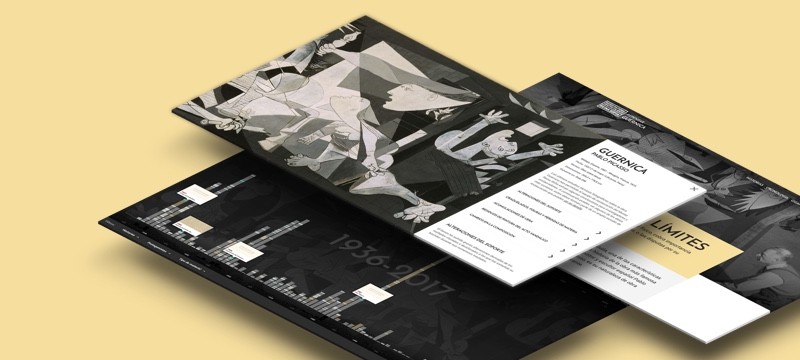Museum of Modern Art, New York
With the nearby example of the activities and exhibition programme of the Harvard Society for Contemporary Art, in the spring of 1929 arrangements began to establish a board of trustees and to lay the organisational foundations of the future modern art museum in New York City. In the summer of that same year, Alfred H. Barr Jr. agreed to become its director, a post he would hold until 1943. From the outset, the idea was to create the most important modern art museum in the world, adhering to a sharply defined political-museum strategy; on this basis, its collection, exhibition and acquisitions programme and education activities were designed. Pablo Picasso, and specifically Guernica, against the backdrop of the war in Europe at the end of 1939 and the institution’s prestige, was a contributing factor to turning New York’s Museum of Modern Art (MoMA) into the ideal location to house the artist’s great work until 1981.
Championed by Lillie P. Bliss, Mary Quinn Sullivan and Abby Aldrich Rockefeller, MoMA marked its opening on November 1929 with the exhibition Cézanne, Gauguin, Van Gogh, Seurat, declaring the principles underpinning the foundations and references to modern art, the touchstones of the museum’s future construction. As its first director, Alfred H. Barr Jr. designed a strategic plan which foresaw the museum’s expansion, reaching beyond painting and sculpture to encompass broader fields, disciplines and artistic practices, brought into effect in the decade that followed with the creation of new and striking departments: drawing, prints, architecture and design, photography and film, education, touring exhibitions, loans, publications, archive and the library. Since then, addressing the needs and contexts arising in contemporary art practices, the museum has established new lines of work — stage, performance, digital art and technological developments for visitors — as well as exhibition spaces, for instance MoMA PS1. Moreover, from the time of its foundation and across its history, the museum has had three sites and undergone numerous renovations and extensions. The way it has gestated and been managed over the near-ninety years of its existence has seen it become a frame of reference as a museum institution and a place for the support and diffusion of contemporary creation in the international artistic landscape.
Alfred H. Barr Jr.’s time at the institution, synthesised in his work in different spheres of action, or the charts he formulated (1929, 1933, 1941), left a deep imprint on the past and future of MoMA. In understanding the museum as a place for creating knowledge, working from experience and visitors’ enjoyment of artworks, a core idea has persisted over the years, initially set in motion by Barr: threading a continuous dialogue between the museum’s collection, temporary exhibitions and the narratives comprising art history, art movements and the figures at their core, with Barr turning both himself and the museum into authorities from which to build the modern history of art.
Picasso, already seen as a key factor along this cutting edge in the polyhedral shaping of modern art, was the subject of numerous exhibitions, his work approached from different angles: thematically, chronologically, and through techniques and materials, be it individually or contextualised with his contemporaries at different points throughout his career. Therefore, after Barr every director of MoMA and the heads of the Painting and Sculpture Department — René d´Harnoncourt, Bates Lowry, William Lieberman, William Rubin, Richard Oldenburg, and its incumbent director Glenn Lowry — have played their part in arranging a Picasso-focused exhibition, all of which have featured Guernica, loaned to the museum until it was handed over to the Spanish government in September 1981.



